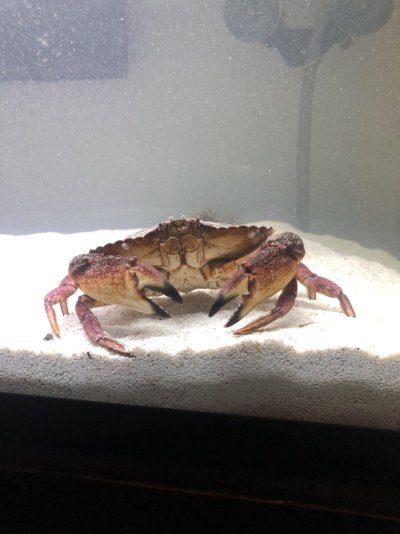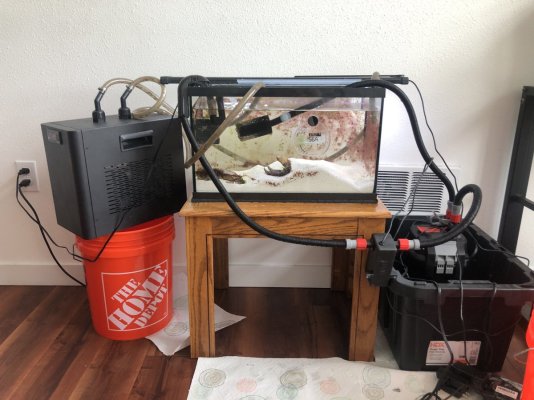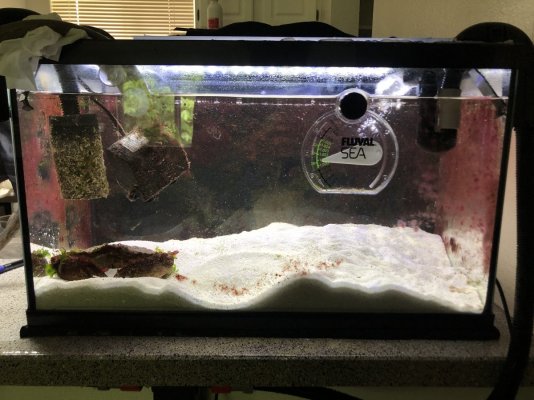Hello, i have an unusual pet which is a Red Rock Crab (Cancer productus) and just aquatic crabs in general are very hard to find good information about other than cooking.
I've had him for about 9 months now. I keep the water temperature and salinity matched to his natural home (Puget Sound) and have him connected to a Fluval canister filter. I also use water conditioner, have a cuttle bone for calcium, and alternate between feeding him algae pellets, fish meat, and wild prawns from the Puget Sound.
For the last half year, he has lost a lot of his red color, turned kind of a dull purple, extremities turned white, eyes foggy, and some specific spots of minor shell degradation. He has also become much more docile; there was one point over the winter that he didn't move for two months, but later came back to slightly higher activity.
My worry for a long time now is that he is experiencing a failed molt. I'm going to be testing for iodide but am wondering what other things may be contributing to this issue. I did previously have a small Graceful Crab who molted seemlessly and without me even knowing It was going to happen. I will say the difference in my Red Rock's activity did change when he was moved from his 40-gal with organic matter from the Sound into a sterile 10-gal (we had a major accident). He will be returning to a 40-gal soon after spending 8 months in the 10-gal.
Any advice or guesses are much appreciated! Looking for any other water tests to perform.

I've had him for about 9 months now. I keep the water temperature and salinity matched to his natural home (Puget Sound) and have him connected to a Fluval canister filter. I also use water conditioner, have a cuttle bone for calcium, and alternate between feeding him algae pellets, fish meat, and wild prawns from the Puget Sound.
For the last half year, he has lost a lot of his red color, turned kind of a dull purple, extremities turned white, eyes foggy, and some specific spots of minor shell degradation. He has also become much more docile; there was one point over the winter that he didn't move for two months, but later came back to slightly higher activity.
My worry for a long time now is that he is experiencing a failed molt. I'm going to be testing for iodide but am wondering what other things may be contributing to this issue. I did previously have a small Graceful Crab who molted seemlessly and without me even knowing It was going to happen. I will say the difference in my Red Rock's activity did change when he was moved from his 40-gal with organic matter from the Sound into a sterile 10-gal (we had a major accident). He will be returning to a 40-gal soon after spending 8 months in the 10-gal.
Any advice or guesses are much appreciated! Looking for any other water tests to perform.


















